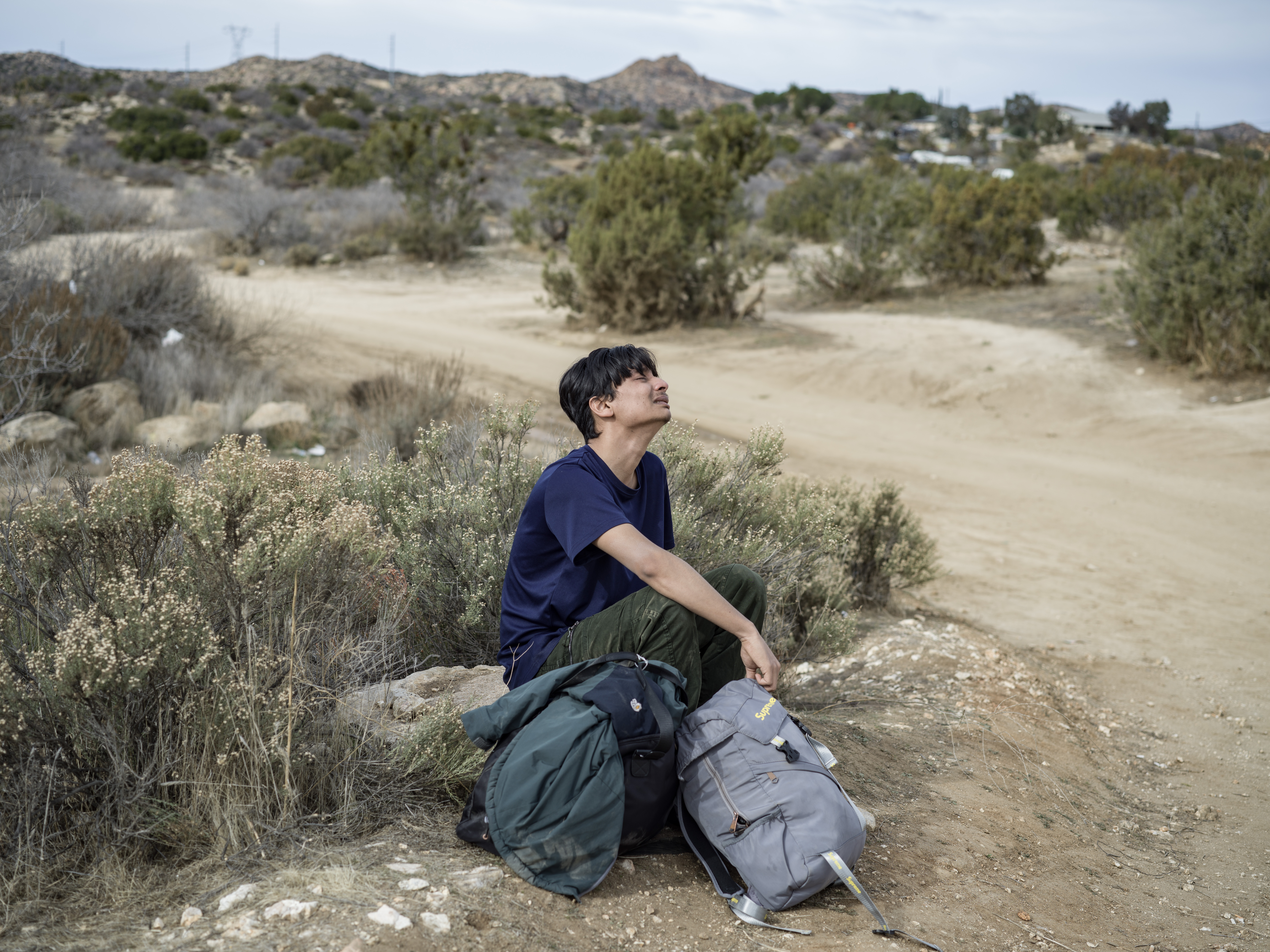In January 2024, Pulitzer-prize winning photographer Barbara Davidson traveled from her Los Angeles home to the California-Mexico border town of Jacumba. The month before, U.S. law enforcement had taken into custody a record number of migrants — more than 225,000 people — and negotiations around border security and immigration legislation ramped up ahead of the presidential primaries. Davidson wanted to put faces on the statistics in news stories about asylum seekers and witness what they face when they try to enter the U.S.
In Jacumba, Davidson met migrants from Turkey, Guatemala, China, Brazil, and Afghanistan — many of whom were making the treacherous journey through the desert with young children. She also met Suny, a man from Nepal, who had been traveling for six months alone to reach the border. Davidson spoke with Nieman Reports about her experience in Jacumba and the pictures she made there. This conversation has been edited and condensed for clarity.
I had been following the news about what was happening on the border. And I thought, ‘This is happening three hours from where I live, I’d really like to go and see for myself what is happening.’ Around that time, fellow photographer Nick Ut and I decided to drive to Jacumba together.
We got there as the sun was rising. It was a very, very cold morning. We saw people along the side of the road with makeshift fires that they had built because they had been there all night. Some were playing chess. Some were gathered under a blue tarp, crouched down.
We drove to the area where people were actually crossing from Mexico into the United States, the area where they were surrendering to the U.S. Border Patrol. But the town of Jacumba, where they crossed into, has a tiny population. So there isn’t enough infrastructure for the amount of people coming into the country, and it takes time to be processed by border guards.
When I met Suny, he was — for lack of a better word — at the front of line where people were surrendering to the border patrol. It’s an area where people are gathered in tents awaiting their turn to meet with agents. He was just sitting by himself and crying profoundly. It was a moment of deep sorrow. And so, I struggled with the question, “Do I make this picture? Do I not make this picture?” I thought to myself, “I’m going to make this picture, because this is a powerful moment to show the desperation and despair people are feeling when they try to come to this country.”
He looked at me as I prepared to make the photo, but he didn’t try to stop me. I approached him, and I asked him what language he spoke. He told me that he was from Nepal. I used Google Translate to communicate with him. The communication obviously was quite broken, but we got the basics. He explained to me, through tears, that he lost his passport and his phone didn’t work. He was so deep in his sorrow that it was hard to connect with him. I asked him if he had anybody that we could contact. He opened his hands, and he showed me this crumpled piece of paper. He opened it up for me very carefully. There were four or five different phone numbers on that piece of paper, and one phone number was an American number. I called the number for him.
On the other end was a gentleman from Nepal, who was living in New York. I told him what was happening. I said, “Listen, I don’t know what your relationship is with this young man. But he’s stranded. And I think he just needs to talk to somebody to help him get through this next phase while waiting for the border guards.” I gave Suny my phone, and they had a conversation. He had someone he could talk to, and they made a plan: Suny was going to get to this man’s house in New York once he was processed.
A week after I met with Suny, I called that man from New York again and found out Suny was with him. He said, “I’m very grateful to you. Suny’s here with me now. We’re just waiting for the process.”
I wanted to get to the root of this migration, I wanted to see what it really looked and felt like on the ground. In September, I became an American citizen, and so it was very poignant for me to see the lengths to which people will go to flee their own country. Oftentimes, we just hear about the statistics on the news, you don’t really see and feel it. You don’t hear the children’s cries. While I know it’s impossible to tell every single story, I think it’s important to humanize this more than what we’re seeing.
When we see the coverage we always see long lines of people. They’re anonymous. What stood out for me about this photo was it was just one lone person in the middle of the desert. But the despair on his face spoke volumes about a collective experience. Sometimes as journalists when we go smaller, it becomes more intimate. It allows our readers to have a more personal understanding of what is taking place in the desert. Suny’s journey is one story on a mass scale.
As told to Megan Cattel.

